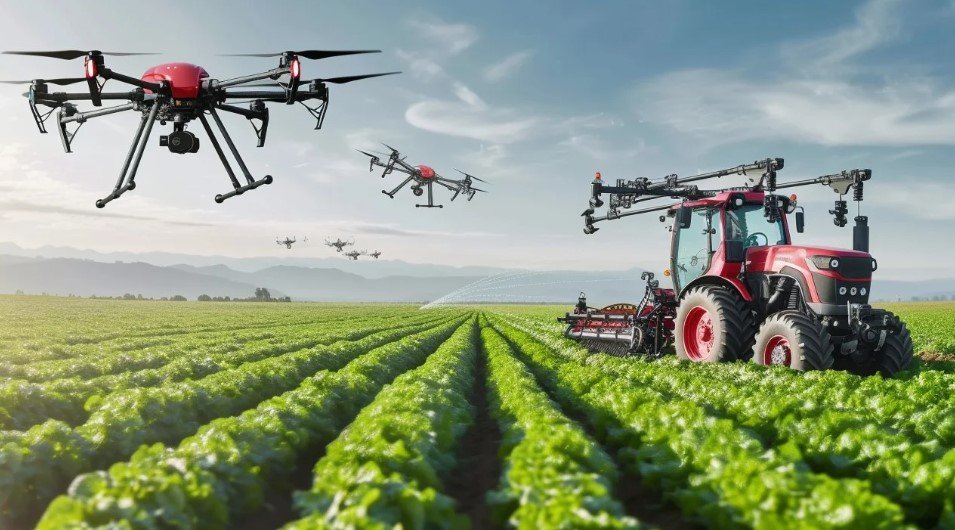Farmers are under pressure like never before—grow more, waste less, and do it all while being greener. With fewer hands in the field and harsher weather above, machines are stepping in to do what humans no longer can.
From AI-powered tractors to self-steering harvesters, the farming sector is inching toward something many never thought they’d see: autonomy in agriculture. Not in the future. Right now.
Labor Shortages Are Pushing Tech Into the Field
Farming used to be one of those things you passed down through generations. Not anymore.
In places like California’s Central Valley, rural Japan, and parts of the EU, there simply aren’t enough people willing—or able—to work the land. Long hours, physical labor, and low pay? Not exactly a dream job for Gen Z.
In fact, according to the USDA, the average age of a farmer in the U.S. is 58. And that number keeps climbing. Even worse? Seasonal workers are harder to find, especially post-pandemic and amid shifting immigration policies in many countries.
Autonomous machines that can plant seeds, monitor crop health, and spray just the right amount of pesticide or fertilizer—without a human hand on the wheel.

Smarter, Leaner, Greener Machines Are Already Here
Don’t think this is just science fiction or Silicon Valley vaporware.
From Australia to the Netherlands, smart farming gear is already rolling through the fields. Trimble, John Deere, and AGCO are pouring billions into R&D. Even Apple supplier Foxconn is getting involved.
In Salinas Valley, California, a fleet of small autonomous tractors operates through GPS-linked control panels and sensors that “see” the terrain. These aren’t your grandpa’s tractors.
They optimize fuel use, reduce overlap in spraying, and help farmers avoid over-fertilizing—saving money and helping the environment.
One example: Solinftec’s Solix AG Robotics Platform, which uses AI to identify and treat individual weeds. No blanket spraying. Just targeted precision.
Here’s how some of the key automation tools stack up:
| Tech Tool | What It Does | Big Benefit |
|---|---|---|
| AI-Guided Tractors | Navigate fields with high precision | Reduces fuel and labor costs |
| Precision Sprayers | Target weeds or pests using image recognition | Cuts chemical use and runoff |
| Agricultural Drones | Monitor crop health from the sky | Early detection, better yield |
| Robotic Harvesters | Pick produce without bruising | Reduces food waste and damage |
Climate, Soil, and Data: The New Variables Machines Handle
Here’s the thing—farming has always been unpredictable.
Rain at the wrong time, a dry spell, a surprise pest outbreak—any of these can tank a harvest. Human judgment has always played a huge role in adapting. But now, with better data, machines are actually helping farmers respond faster.
Climate change has made these decisions even trickier. A heatwave in spring? A frost in early fall? These weird swings aren’t just happening more—they’re happening everywhere.
Autonomous systems use satellite imaging, real-time weather feeds, and predictive algorithms to help make decisions on-the-go.
It’s Not Cheap, But It’s Getting Cheaper
Let’s be real. These machines don’t come cheap.
Buying a single autonomous tractor can cost upwards of $500,000. For small and mid-sized farms, that’s a tough pill to swallow. But financing models and equipment-sharing programs are helping spread the cost.
Governments, too, are stepping in.
-
The EU’s Horizon program is backing autonomous ag startups with grants.
-
Japan subsidizes robot purchases for rice farmers.
-
The U.S. Department of Agriculture offers tax credits for smart tech adoption.
It’s starting to look like a new kind of arms race—except the goal isn’t destruction, it’s better food systems.
Will Robots Really Feed the World?
Critics argue that big ag companies could dominate this space, pushing out smaller players. Others worry about over-reliance on AI and data—what happens if the system fails in the middle of harvest?
But in places like India and Kenya, autonomous tools are being scaled down, not up. Solar-powered sprayers and smartphone-linked irrigation systems are helping farmers do more with less. That’s real-world impact.
And yes, even some unexpected names are showing up.
Elon Musk’s Tesla has reportedly explored electric farming platforms. Amazon-backed startups are trialing drone-based fertilizer delivery in Brazil. The tech giants are watching this space—closely.
Bottom Line: Automation Is Becoming Agriculture’s Silent Partner
Here’s the kicker: this shift isn’t loud. There’s no dramatic rollout. No big announcement. It’s happening little by little—one tractor, one drone, one line of code at a time.
The result? A quiet transformation of one of the world’s oldest industries into something that looks surprisingly modern.







